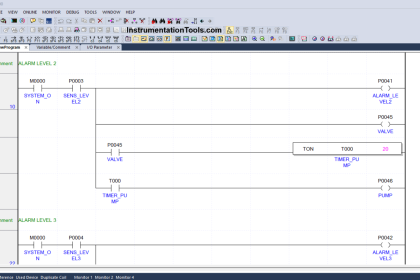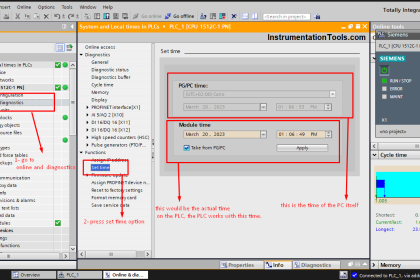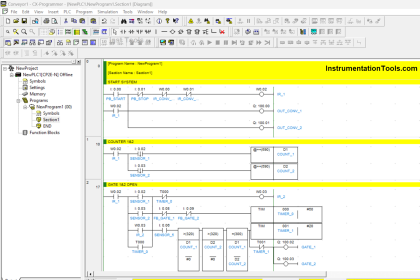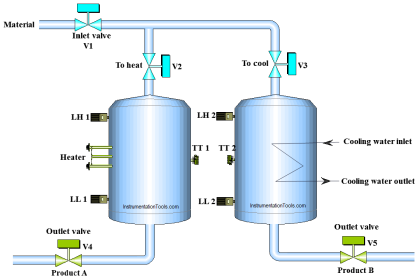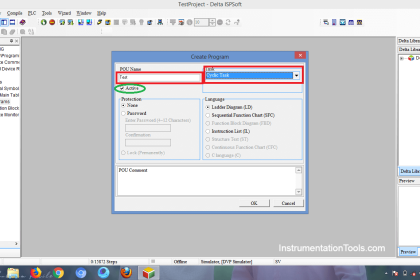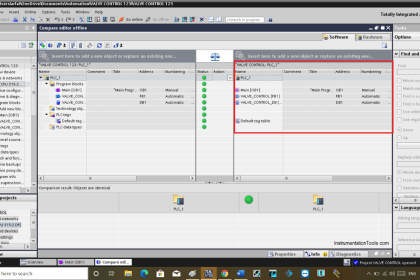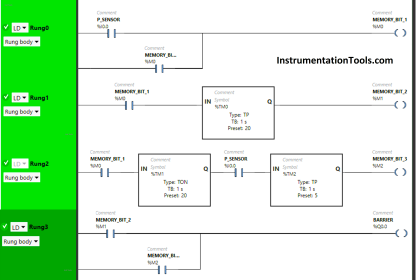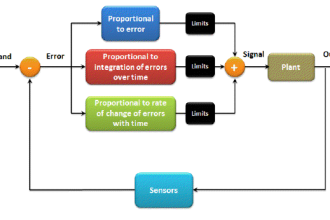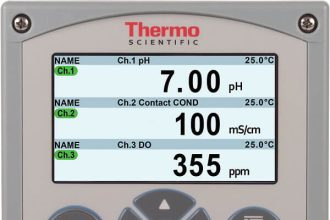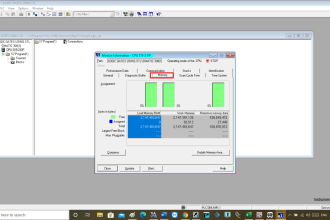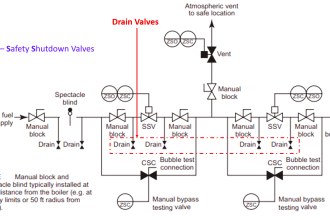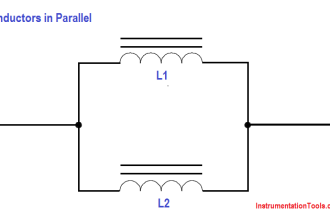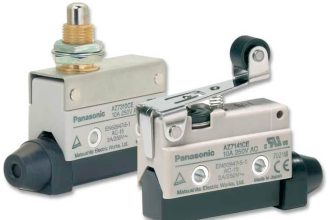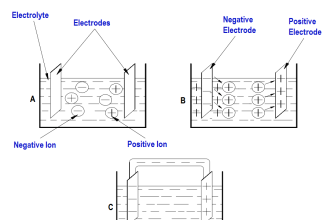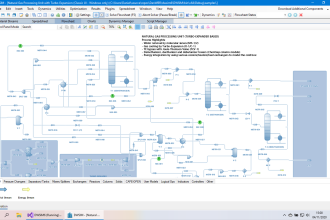This article discusses the PLC program for controlling bread ovens automatically and manually using Omron PLC CX-Programmer software.
Bread Oven Control
When the Bread Oven is Run in Manual Mode, the Bread Oven temperature parameters must be Set, the Bread Oven will Start baking when the “Warm On” button is Pressed and the baking process can be Stopped when the “Warm Off” button is Pressed.
When the Bread Oven is Running in Auto Mode, the Timer time and Bread Oven temperature parameters must be Set, the Bread Oven will Start baking when the “Warm On” button is Pressed. The baking process will Stop when the Timer time value has been reached or if the “Warm Off” button is Pressed. The alarm will Activate when the bread baking process in Auto mode is complete.
Program Objective
This PLC program has 3 buttons and 1 Selector Switch:
- The TURN_ON (0.00) button is used to turn ON the system
- The TURN_OFF (0.01) button is used to turn OFF the system
- The WARM_ON_BUTTON (0.03) button is used to Run the baking process
- The WARM_OFF_BUTTON (0.04) button is used to Stop the baking process.
- Selector Switch MODE (0.02) is used to select the system to Run in Auto or Manual mode.
The baking process can only be carried out if the Oven temperature value in the memory word SV_TEMPERATURE (D0) has been Set.
Manual Mode
When the WARM_ON_BUTTON (0.03) button is Pressed, the OUT_OVEN (100.00) output will be ON and the baking process will be carried out. The baking process will be Stopped if the WARM_OFF_BUTTON (0.04) button is Pressed. And the Output OUT_OVEN (100.00) will be OFF.
Auto Mode
In AUTO MODE the system can only be Started when the “Set Value” timer in the memory word SV_TIMER_AUTO (D10) has been Set.
When the WARM_ON_BUTTON (0.03) button is pressed, the OUT_OVEN (100.00) output will be ON and the baking process will be carried out. The baking process will be stopped if the TIMER_AUTO (T0000) timer has finished counting or the WARM_OFF_BUTTON (0.04) button is Pressed. And The Output OUT_OVEN (100.00) will be OFF.
When the TIMER_AUTO (T0000) timer has finished counting, the OUT_ALARM (100.01) output will be ON to provide an indicator that the baking process is complete.
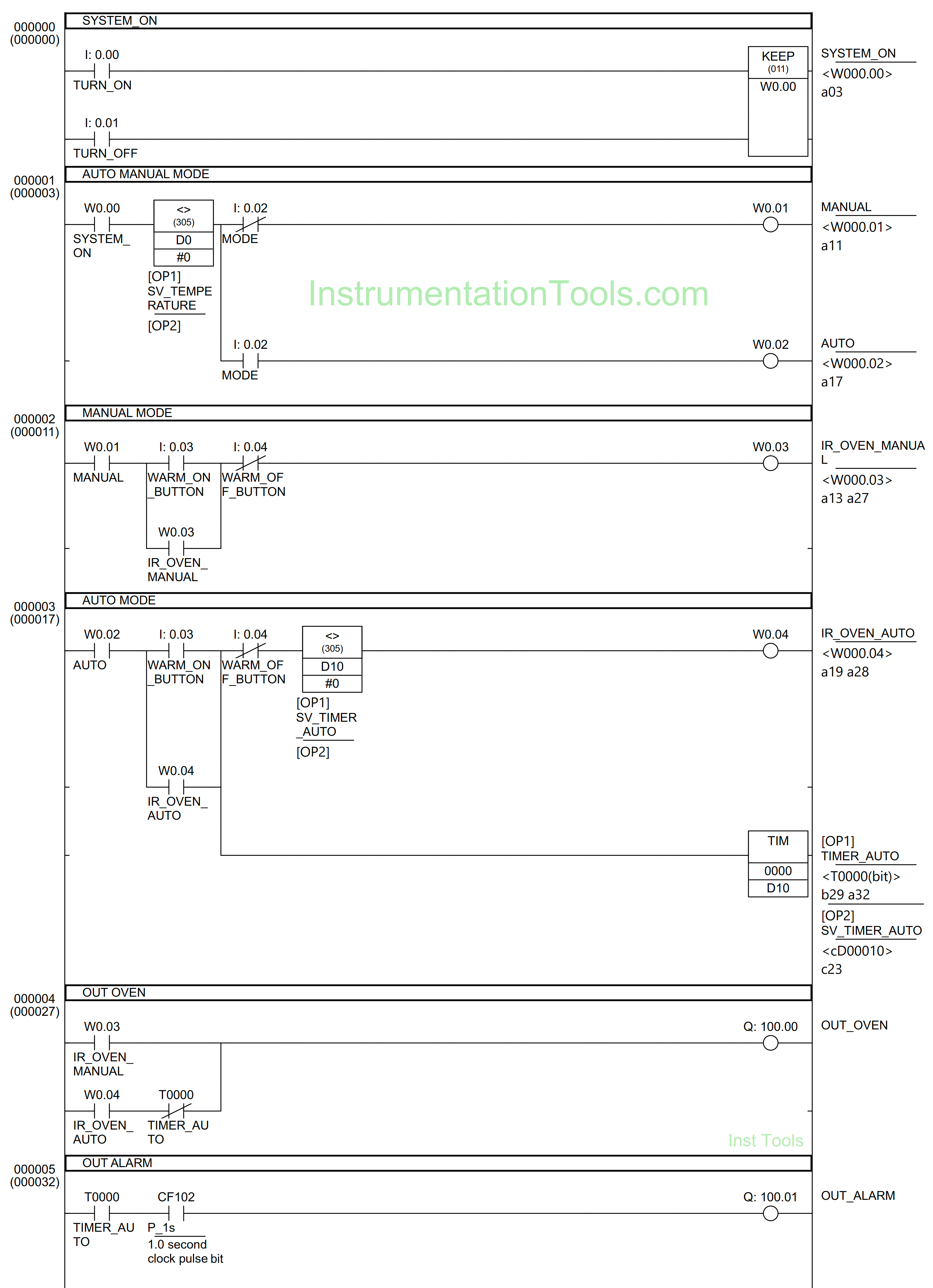
IO Addressing
| Comment | Input (I) | Output (Q) | Memory Word | Memory Bits | Timer |
| TURN_ON | 0.00 | ||||
| TURN_OFF | 0.01 | ||||
| MODE | 0.02 | ||||
| WARM_ON_BUTTON | 0.03 | ||||
| WARM_OFF_BUTTON | 0.04 | ||||
| OUT_OVEN | 100.00 | ||||
| OUT_ALARM | 100.01 | ||||
| SV_TEMPERATURE | D0 | ||||
| SV_TIMER_AUTO | D10 | ||||
| SYSTEM_ON | W0.00 | ||||
| MANUAL | W0.01 | ||||
| AUTO | W0.02 | ||||
| IR_OVEN_MANUAL | W0.03 | ||||
| IR_OVEN_AUTO | W0.04 | ||||
| TIMER_AUTO | T0000 |
PLC Programming
RUNG 0 (START SYSTEM)
In this Rung, when the TURN_ON (0.00) button is pressed, the memory bit SYSTEM_ON (W0.00) will be in the HIGH state. Because the KEEP(011) instruction is used, the memory bit SYSTEM_ON (W0.00) remains in the HIGH state even though TURN_ON (0.00) button has been Released.
The memory bit SYSTEM_ON (W0.00) will become a LOW state if the TURN_OFF (0.01) button is Pressed.
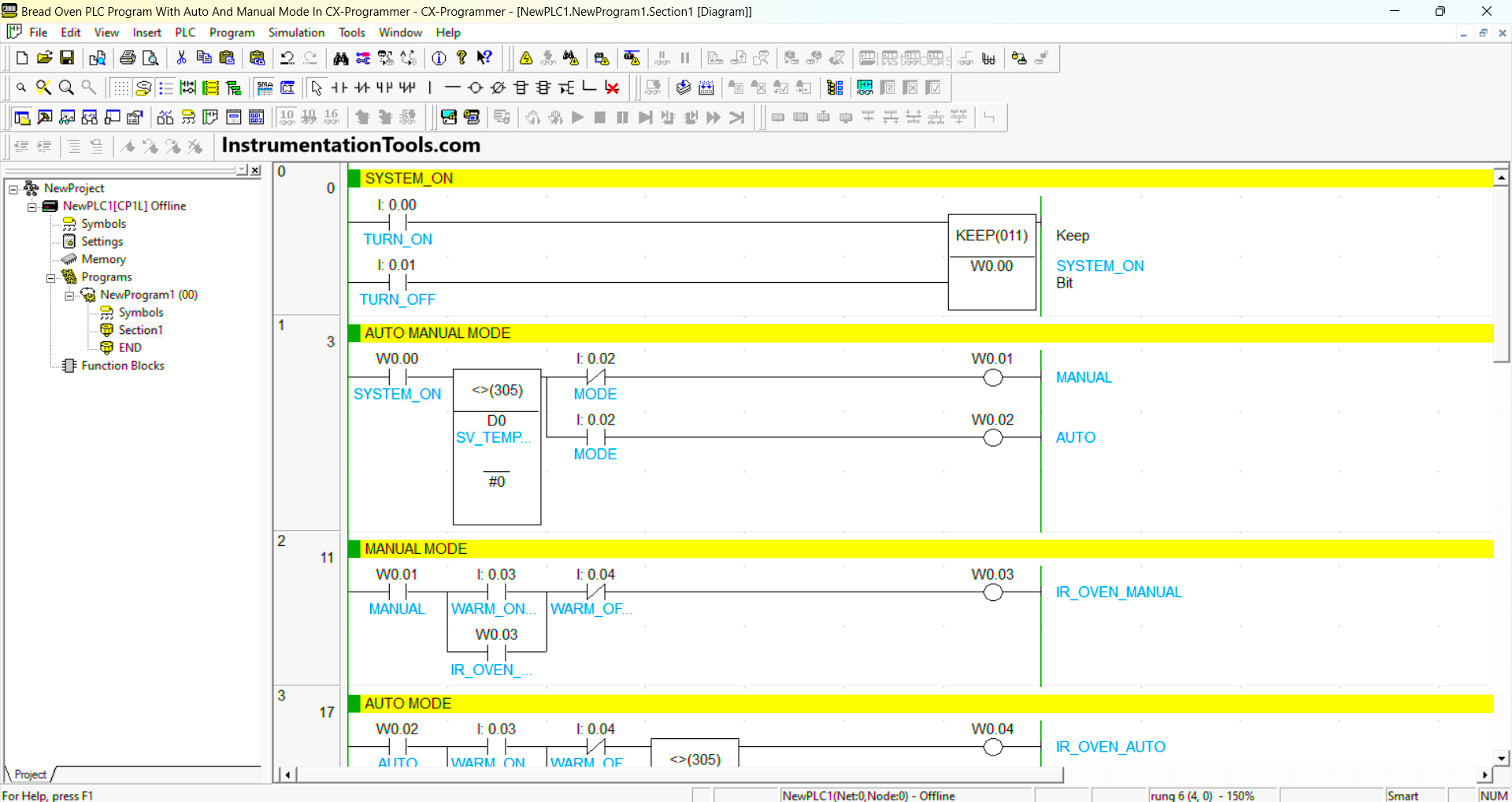
RUNG 1 (AUTO MANUAL MODE)
In this Rung, when the NO contact of memory bit SYSTEM_ON (W0.00) in the HIGH state and the value in memory word SV_TEMPERATURE (D0) is not equal to zero “0”, then the output memory bit MANUAL (W0.01) will be in the HIGH state. The system will Run in MANUAL mode.
When the NO contact of Selector Switch MODE (0.02) is in the HIGH state, the memory bit MANUAL (W0.01) will be in the LOW state and the output memory bit AUTO (W0.02) will be in the HIGH state. The system will switch to Auto mode.
RUNG 2 (MANUAL MODE)
When the NO contact of memory bit MANUAL (W0.01) is in the HIGH state and the WARM_ON_BUTTON (0.03) button is pressed, the output memory bit IR_OVEN_MANUAL (W0.03) will be in the HIGH state.
The memory output bit IR_OVEN_MANUAL (W0.03) will return to a LOW state if the WARM_OFF_BUTTON (0.04) button is Pressed.
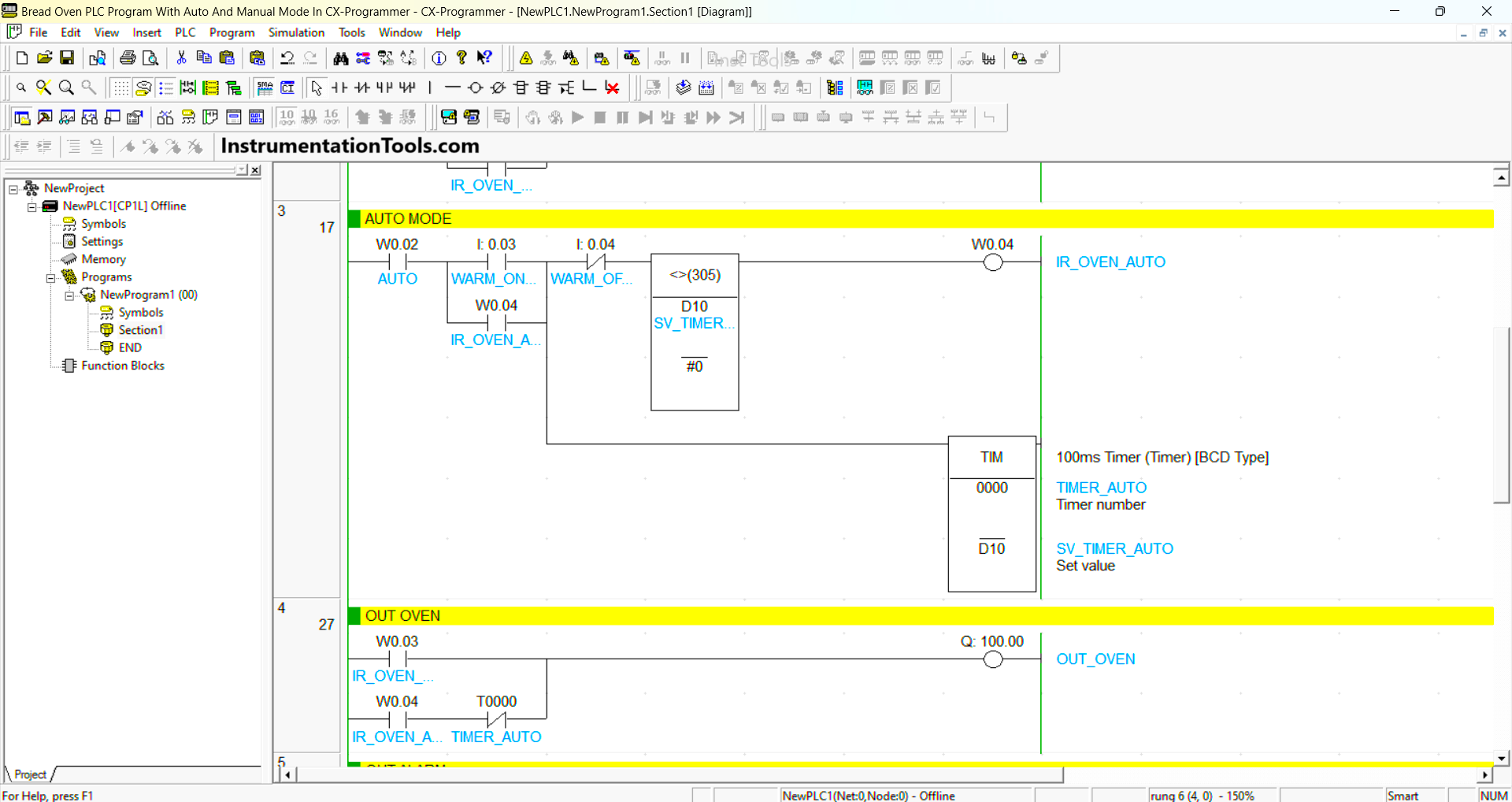
RUNG 3 (MANUAL MODE)
In this rung, when the NO contact of memory bit AUTO (W0.02) in the HIGH state and the WARM_ON_BUTTON (0.03) button is Pressed and the value in memory word SV_TIMER_AUTO (D10) is not equal to zero “0”, then the output memory bit IR_OVEN_AUTO (W0.04) will be in the HIGH state and the TIMER_AUTO (T0000) timer will start Counting.
The output memory bit IR_OVEN_AUTO (W0.04) will be in the LOW state if the WARM_OFF_BUTTON (0.04) button is Pressed.
RUNG 4 (OUT OVEN)
In this Rung, the Output OUT_OVEN (100.00) will be ON if the NO contact of memory bit IR_OVEN_MANUAL (W0.03) or IR_OVEN_AUTO (W0.04) will be in the HIGH state.
When the NC contact of timer TIMER_AUTO (T0000) is in the HIGH state, the Output OUT_OVEN (100.00) will be OFF.
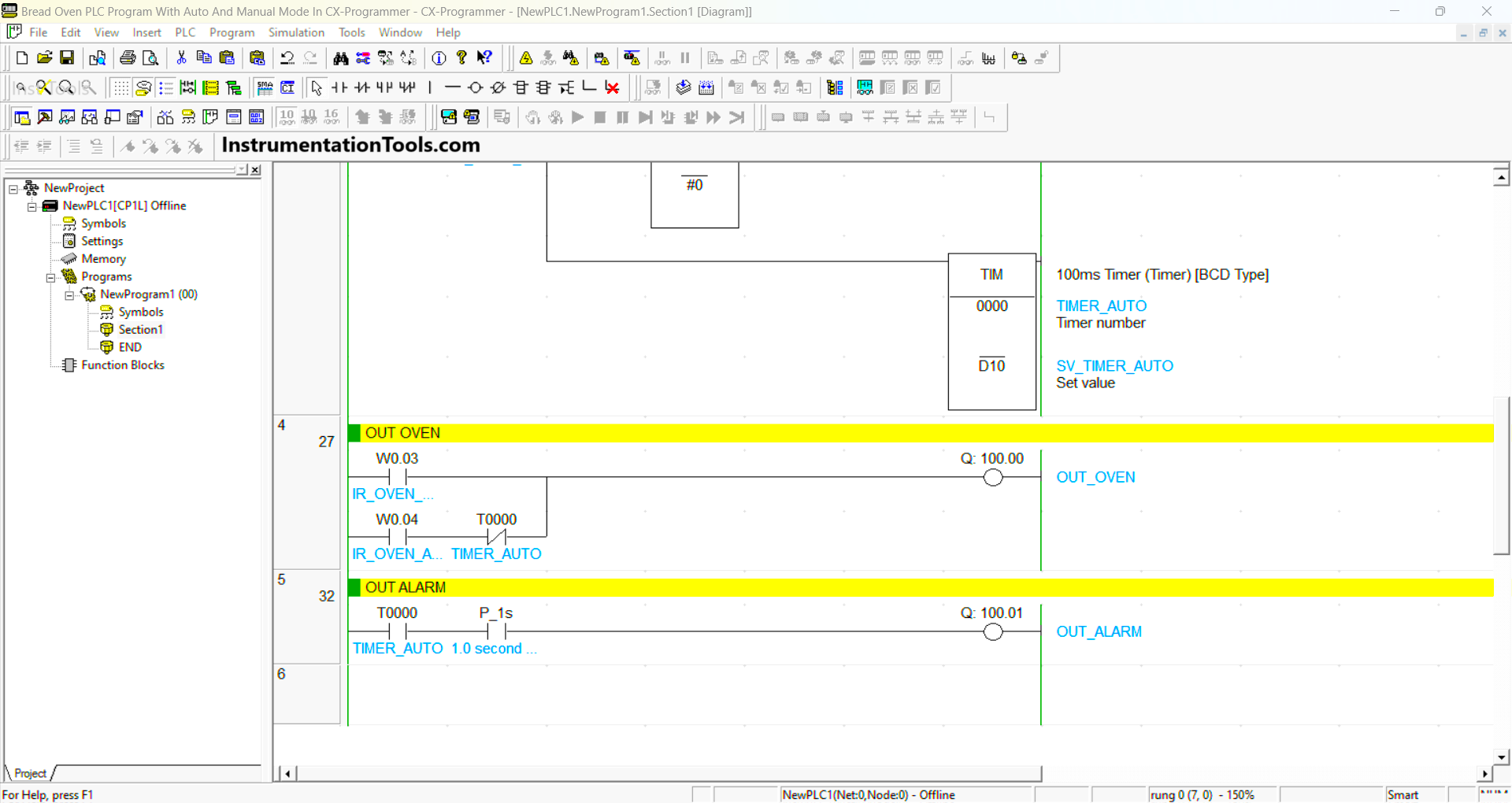
RUNG 5 (OUT ALARM)
In this Rung, when the NO contact of timer TIMER_AUTO (T0000) is in the HIGH state, the output OUT_OVEN (100.00) will be OFF and OUT_ALARM (100.01) will be ON by blinking.
Read Next:
- Automatic Railway Crossing Gate PLC Logic
- PLC Program for Mailbox with Counting
- Dosing Pump PLC Programming Logic
- PLC Programming 3 Motors with Priority
- PLC Crane Movement Control Program
